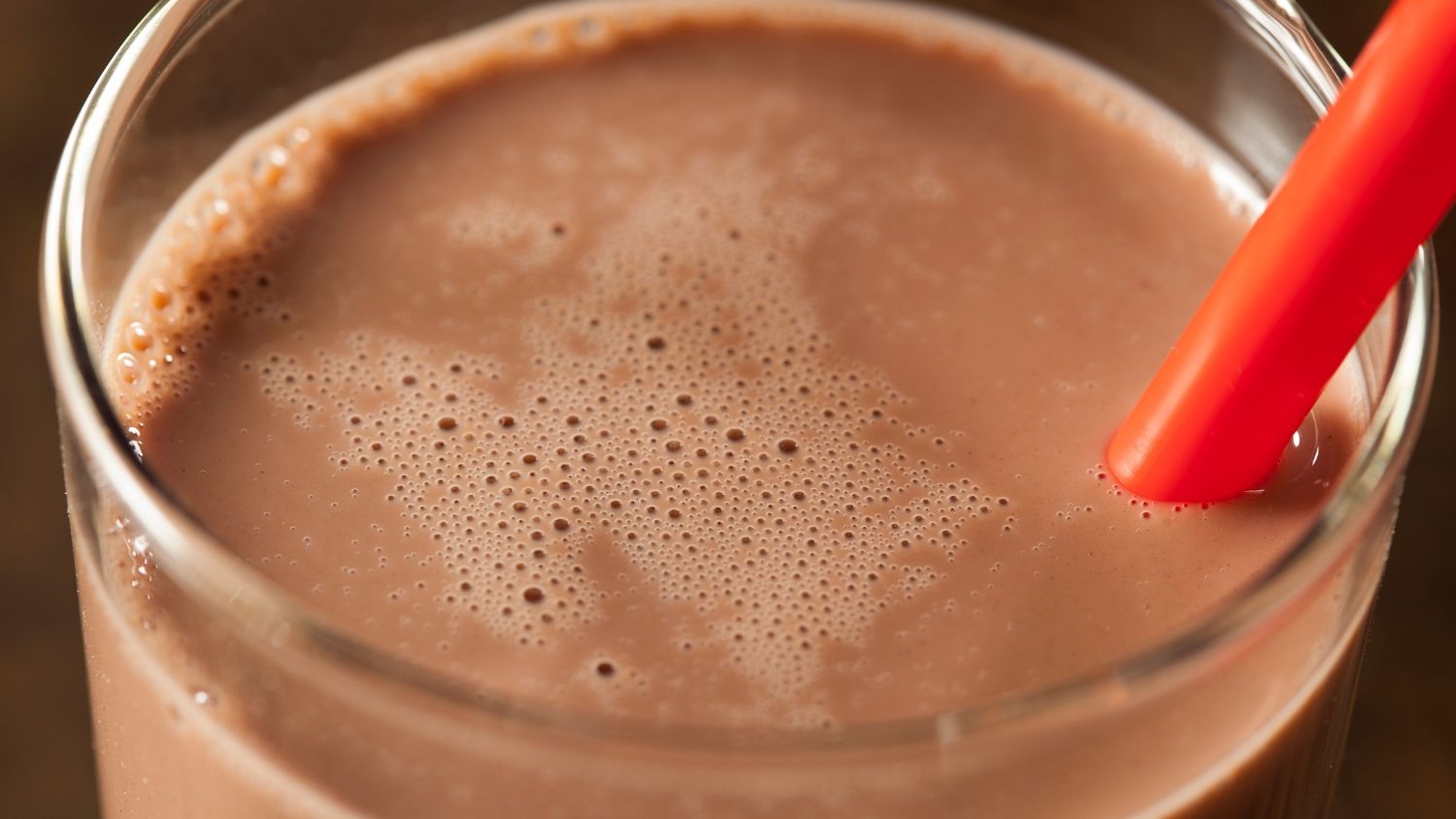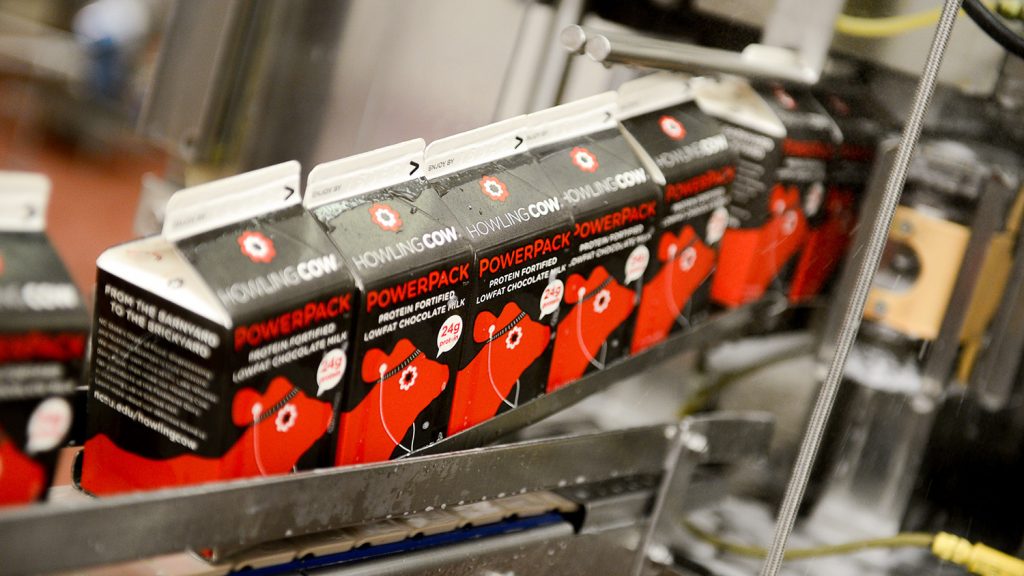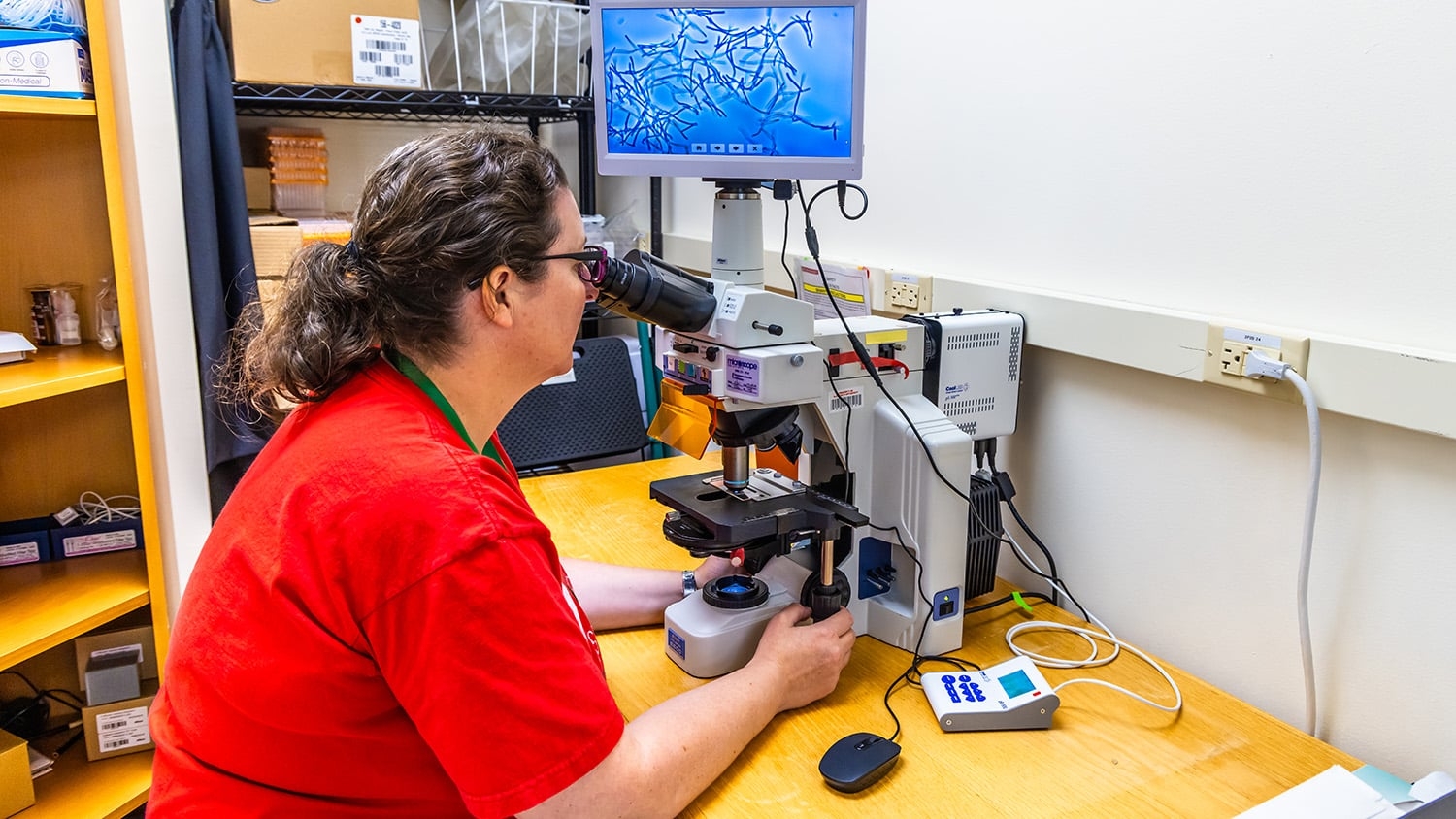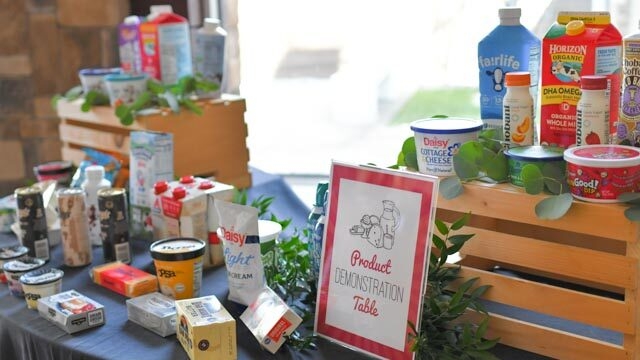How Dairy Drinks Help Fuel Athletes

Year after year, sports nutrition research shows that one of the best drinks after a strenuous workout is a childhood favorite: chocolate milk.
“It contains protein, carbohydrate, fat and electrolytes,” explains Jon Allen, professor and director of graduate programs for food science at North Carolina State University. “Those are the things that manufacturers intentionally put into a sports drink for recovery.”
Packed With Protein
Researchers in NC State’s Department of Food, Bioprocessing and Nutrition Sciences applied their expertise with protein-fortified sports drinks to help create Howling Cow PowerPack, made with fresh milk, cane sugar and added whey protein.
“Whey protein is high in leucine and other branched-chain amino acids,” Allen says. Those amino acids help the body repair and build muscle tissue following a workout.
Registered Dietitian Jonathan Tanguay, NC State’s assistant athletic director for sports nutrition and a board-certified specialist in sports dietetics, recommends PowerPack as a post-workout drink because of its nutritional profile, which includes calcium, both an electrolyte and a bone-building mineral.
“Howling Cow PowerPack is a great recovery option for all NC State athletes,” he says. “It is a great option after weight training, practice or competition.”
Powered by Carbs
Allen, who teaches courses on exercise nutrition, energy metabolism, and milk and dairy products, started studying workout recovery as a cross-country skier.
He says a key to bouncing back for the next run, game or match is to refuel within two hours after strenuous exercise. That’s a window when the body is primed to rebuild an energy reserve called glycogen, stored in the liver and muscles. Glycogen consists of a long chain of molecules of simple sugar – glucose – a quick source of energy.
“Glycogen is the biological trick of being able to store carbohydrate and have that readily available. When you need it for exercise, enzymes chop those individual sugars off that long chain, put them into the bloodstream and carry them to the muscles.”
However, the body stores a limited amount of glycogen, enough for a 24- to 36-hour period.
“That’s about how much you store just for the needs of daily living, so a heavy workout is probably going to take 75% of the glycogen out of your liver during that one or two hours that you’re in the gym or running,” Allen says.
Rebuilding glycogen is a challenge in competitions held over several days.
“If you go to a two- or three-day swim meet, where you’re doing a long warmup, prelims and finals, and you do that two or three days in a row, it’s difficult to recover that glycogen,” Allen says. “So on your third day, you’re not performing at the same level as you are on the first day.”

Stingy With Fat
While chocolate milk and dairy-based sports drinks contain fat – something that’s not in water-based products – most dairy drinks use low-fat milk as a base, Allen says.
“In PowerPack about 36 of 310 calories come from fat – about 10% of the calories,” he explains.
“That’s certainly less fat than if you went out and ate a bagel with cream cheese.”
Rich in Electrolytes
Athletes look for sports drinks that contain electrolytes: minerals like sodium, potassium and calcium.
“Electrolytes are critical for things like nerve conduction, muscle contraction and fluid balance,” Allen says.
An electrolyte imbalance can cause a dip in performance and cramps from dehydration. Keeping the right ratio of sodium to potassium is vital.
“Your kidneys will do a good job of balancing the amount of sodium to potassium in your bloodstream, but you have to have adequate potassium because that’s an intracellular electrolyte, and the kidneys don’t see what’s happening inside the cells of your muscle.”
Potassium can be depleted during exercise, a reason athletes reach for a banana or sports drink.
“Milk is high in potassium and has a good ratio of potassium to sodium,” Allen says. And low-fat milk, such as the kind used in sports drinks, contains more potassium than whole milk.
Fortified With Vitamin D
Milk provides a beneficial balance of vitamins, and because it’s fortified with vitamin D, it helps prevent a common vitamin deficiency, Allen says.
“Unless you’re doing intense outdoor exercise with a lot of sunlight, many people can end up vitamin D deficient without fortified foods or supplements. Vitamin D is critically important for muscle building and for preventing sarcopenia or muscle loss in elderly people.”
To build healthy bones, the body needs vitamin D as well as calcium and phosphorus, two minerals found in milk.
If you’re lactose intolerant, Allen recommends looking for hydrolyzed chocolate milk. This type of processing uses enzymes to break down milk’s lactose into simpler sugars that can be readily absorbed. The added sugar in chocolate milk is also easily digested and adds to the carbohydrate needed in a recovery beverage.
This post was originally published in College of Agriculture and Life Sciences News.


